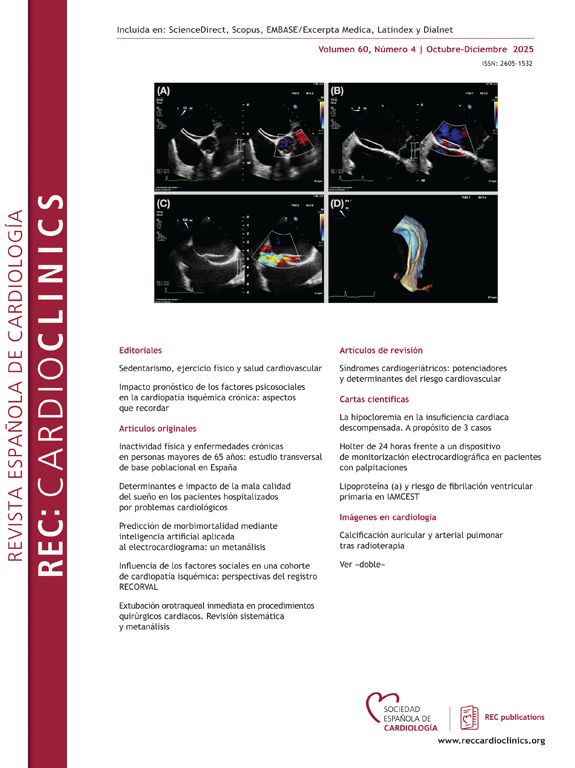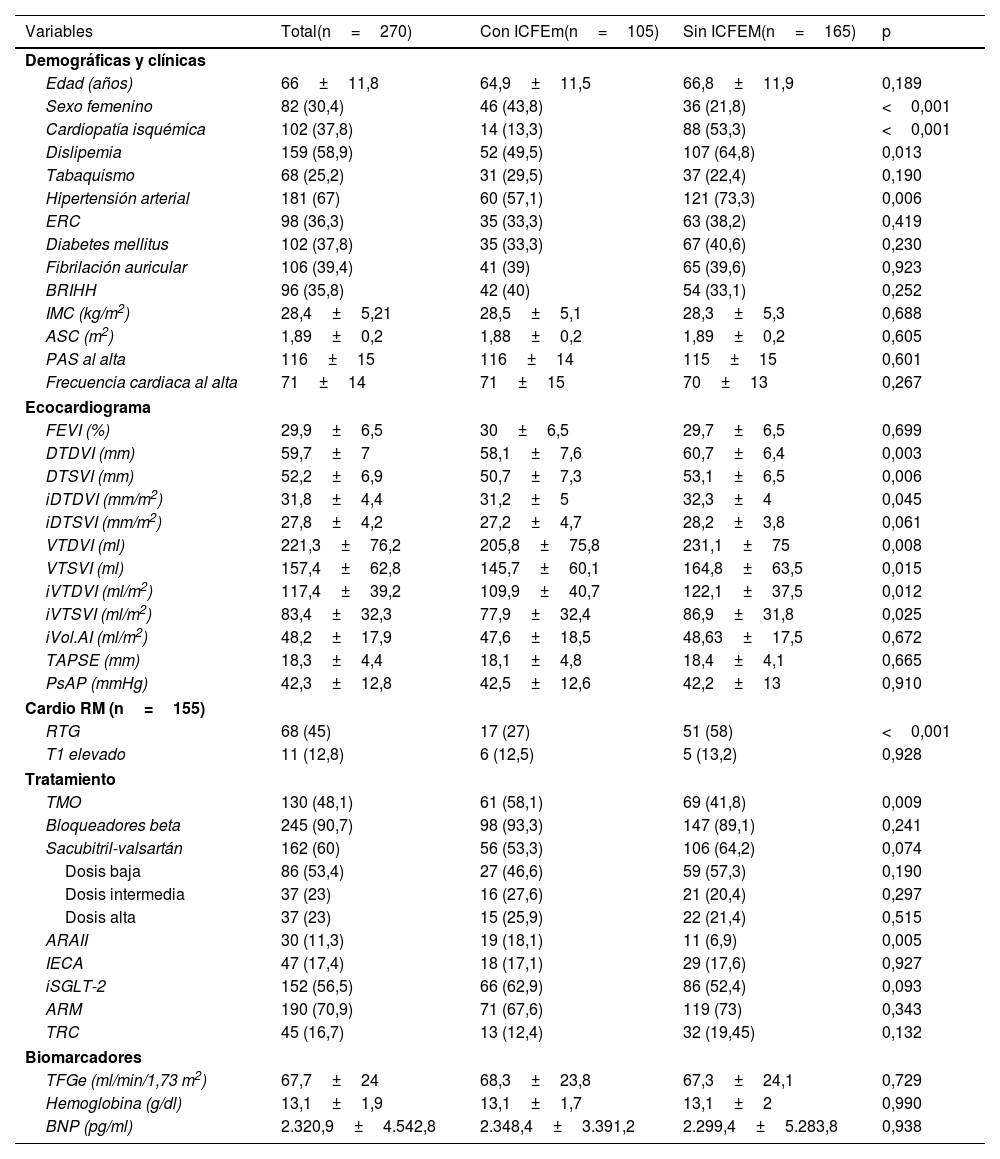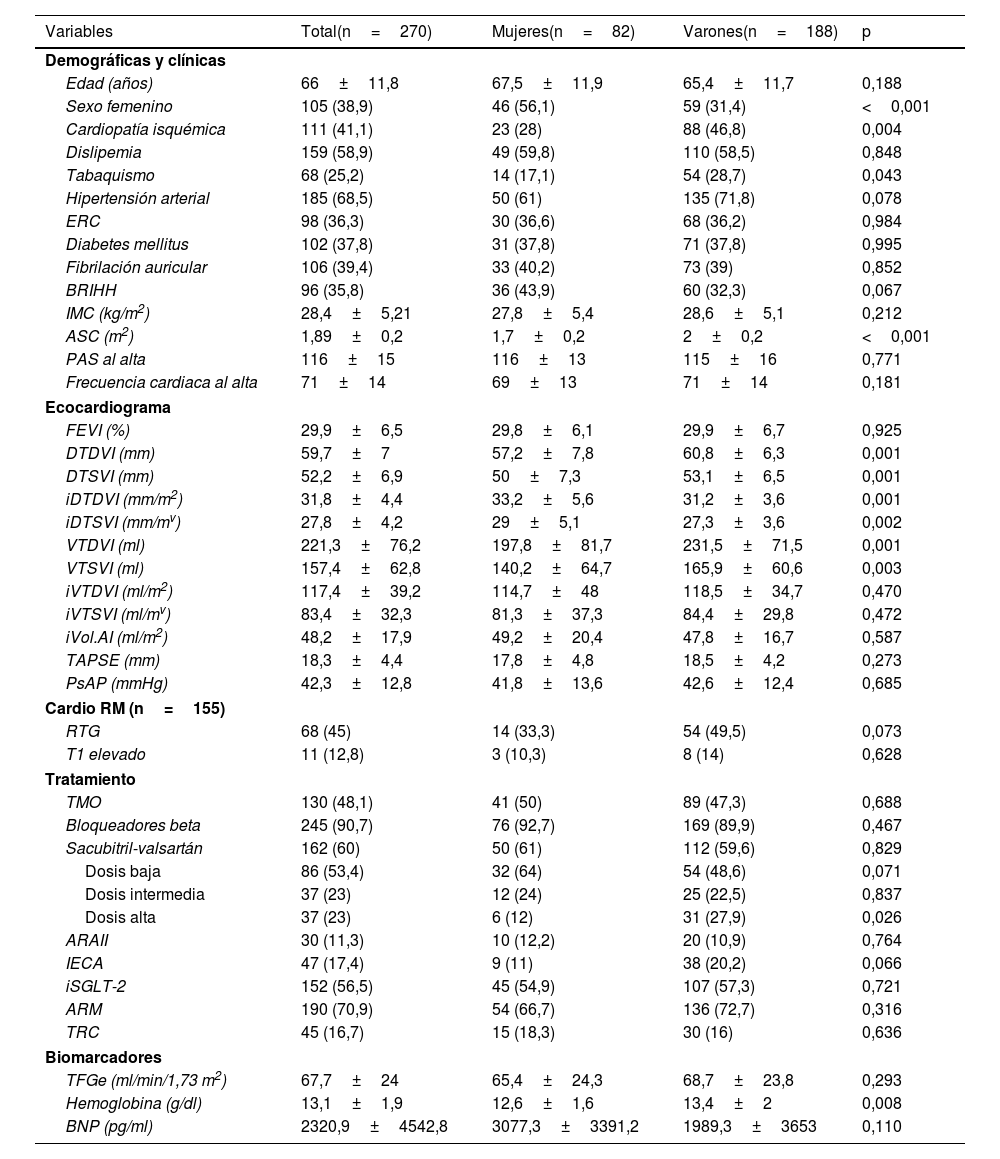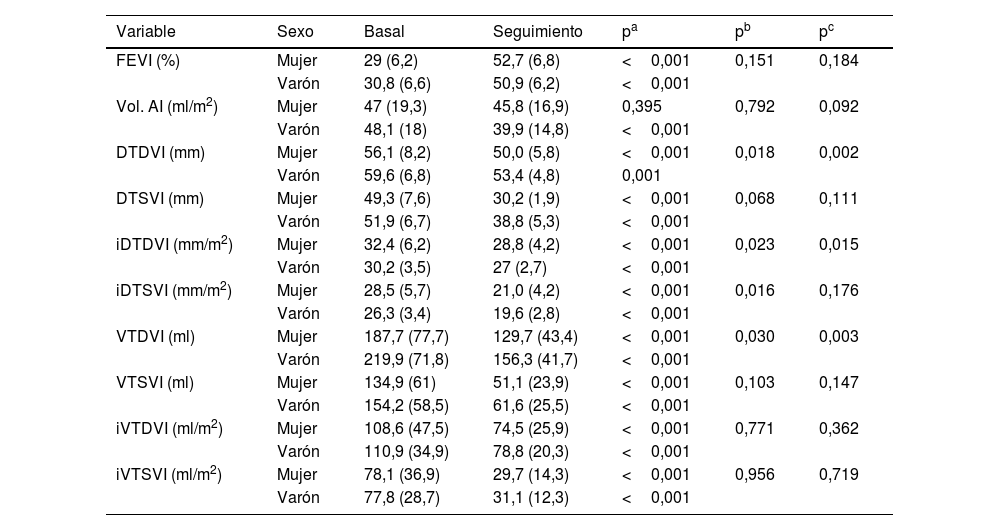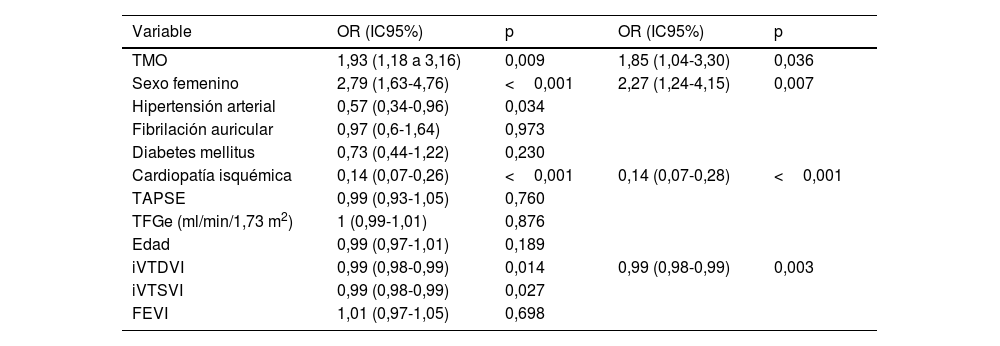La insuficiencia cardiaca (IC) con fracción de eyección del ventrículo izquierdo (FEVI) mejorada (ICFEm) es una entidad clínica definida recientemente. Los datos acerca de su historia natural son aún limitados. Evaluamos el efecto del sexo femenino sobre la incidencia y el pronóstico de pacientes con ICFEm.
MétodosEstudio retrospectivo de una cohorte de pacientes con IC y FEVI reducida. Se definió ICFEm como un aumento de ≥10puntos de FEVI respecto a la basal y valor final >40%, medido ≥3meses tras el alta. El objetivo principal fue la incidencia de ICFEm; el secundario, el evento combinado de muerte cardiovascular e ingreso por IC. Se estimaron los predictores de ICFEm y su relación con los eventos, estratificando por sexos.
ResultadosSe incluyó a 270 pacientes (edad media: 66,3±11,5 años; 30,4% mujeres). Los 105 casos (38,9%) con ICFEm fueron más frecuentes en mujeres (43,8% frente al 21,8%; p<0,001) y tenían menor prevalencia de etiología isquémica (11,3% frente al 53,3%; p<0,001), dislipemia (49,5% frente al 64,8%; p=0,013) e hipertensión arterial (57,1% frente al 73,3%; p=0,006) y mayor de tratamiento médico óptimo (58,1% frente al 45,8%; p=0,009). No había diferencias entre los volúmenes ventriculares indexados entre sexos. El sexo femenino fue predictor independiente de ICFEm, ORajustada=2,28; IC95%, 1,25-4,15; p=0,007. La ICFEm se asoció a una menor probabilidad del evento combinado (21,9% frente a 49,7%; log-rank p<0,001) y la edad fue el único predictor del evento combinado.
ConclusionesLa ICFEm constituye un fenotipo propio. El sexo femenino predice recuperación de FEVI, pero no eventos cardiovasculares, donde solo la edad fue un predictor.
Heart failure (HF) with improved left ventricular ejection fraction (HFimpEF) is a recently defined clinical entity. Data regarding its natural history is still limited. We evaluated the effect of female sex on the incidence and prognosis of patients with HFimpEF.
MethodsRetrospective study of a cohort of patients with HF and reduced ejection fraction. HFimpEF was defined as an increase of ≥10 percentage points in left ventricular ejection from baseline with a final value >40%, measured at least 3months after discharge. The primary objective was the incidence of HFimpEF; the secondary was the combined event of cardiovascular death and HF hospitalization. We estimated the predictors of HFimpEF and their relationship with events, stratified by sex.
ResultsA total of 270 patients (mean age: 66.3±11.5 years; 30.4% women) were included. HFimpEF occurred in 105 cases (38.9%) and was more frequent in women (43.8% vs 21.8%; P<.001). These patients had a lower prevalence of ischemic etiology (11.3% vs 53.3%; P<.001), dyslipidemia (49.5% vs 64.8%; P=.013), and hypertension (57.1% vs 73.3%; P=.006), and higher rates of optimal medical therapy (58.1% vs 45.8%; P=.009). There were no differences in indexed ventricular volumes between sexes. Female sex was an independent predictor of HFimpEF, adjusted OR, 2.28; 95%CI, 1.25-4.15; P=.007. HFimpEF was associated with a lower probability of the combined event (21.9% vs 49.7%; log-rank P<.001), and age was the only predictor of the combined event.
ConclusionsHFimpEF represents a distinct phenotype. Female sex predicts left ventricular ejection recovery but not cardiovascular events, where age was the only predictor.
Article
Use datos de acceso a SEC en el menú Acceder.
Si es socio de la Sociedad Española de Cardiología y no puede acceder con sus claves, escriba a rec@cardioclinics.org.
Use the Society's website login and password here.
If you are member of SEC and you have some problems with your login data, please contact with rec@cardioclinics.org.


